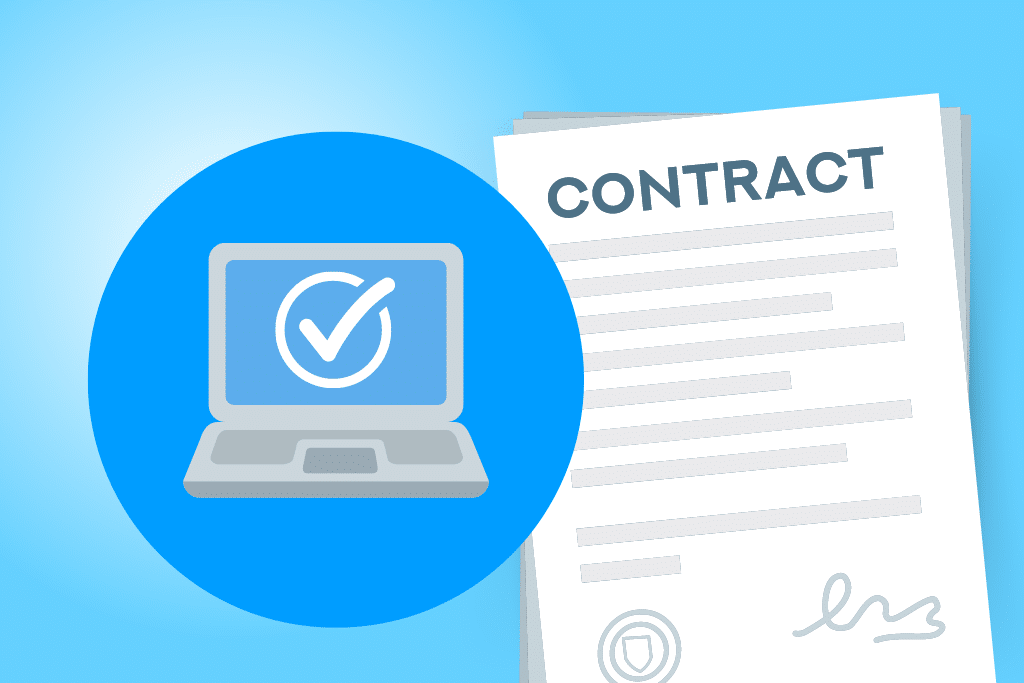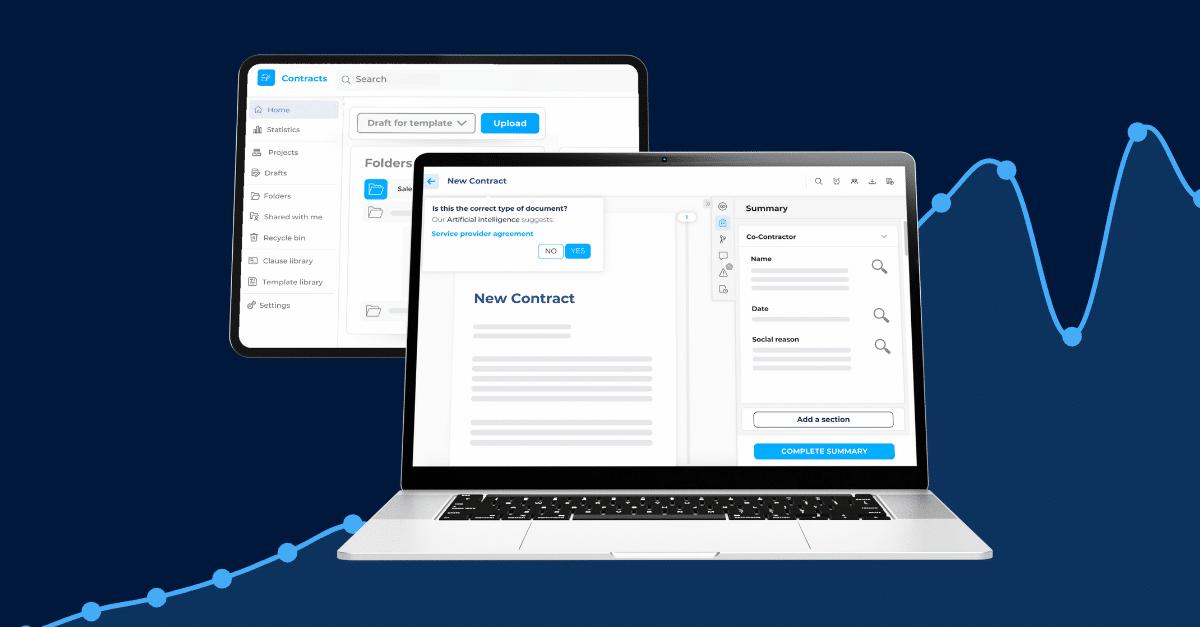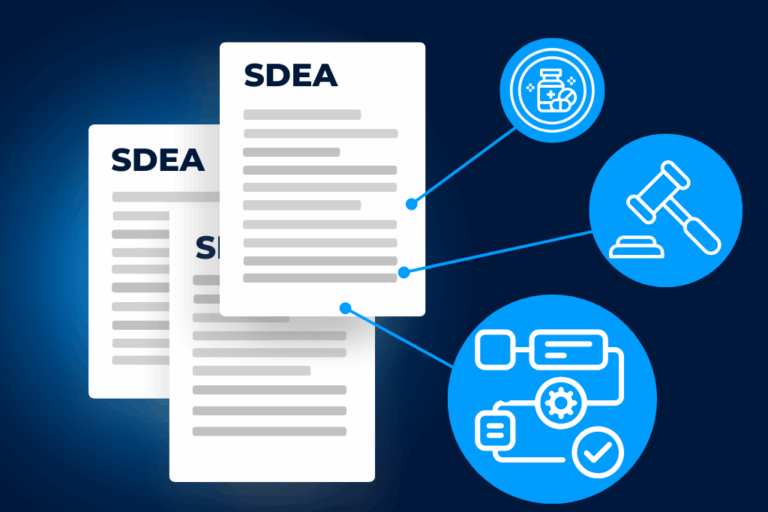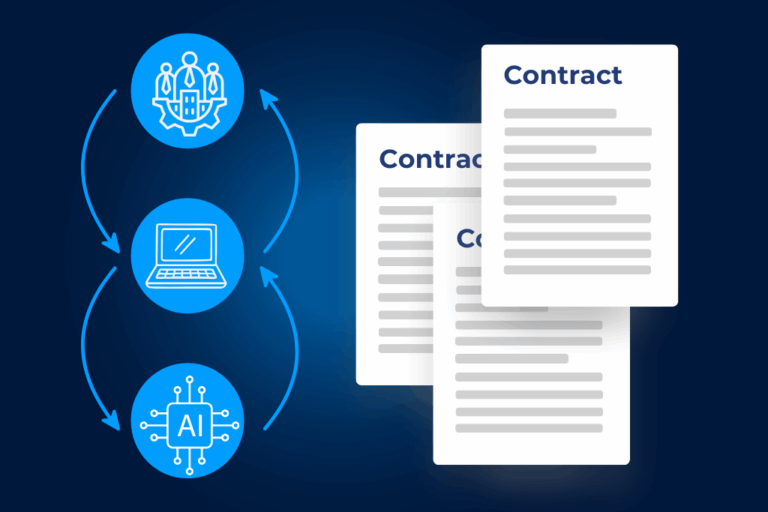Contract management is an entire skill unto itself, and as such is often the responsibility of a dedicated team or employee within the company. With the volume of contracts constantly increasing, it is becoming difficult to tackle this task without help from digital tools!
What are the key challenges involved in contract management in 2025? How can automation help to address these issues?

The major challenges of contract management
In 2025, managing all of your company’s contracts without the use of a platform is impossible… And there is no escaping the risks that go along with handling them manually. With that in mind, here are some of the biggest challenges that contract management software entails.
Quantities that make manual handling difficult, if not impossible
According to a PwC survey, large businesses each have anywhere between 20,000 and 40,000 contracts to handle on average. While handling these manually is possible for small volumes in the order of a few dozen per month, these sorts of colossal quantities make manual business contract management nigh impossible! And, if businesses do achieve this, it comes at the cost of valuable working hours. Along with a risk of error commensurate with the volume of contracts being managed.
Manually handling contracts results in countless problems, starting with engaging skilled employees (i.e. lawyers) in carrying out repetitive, time-consuming tasks such as copying/pasting clauses, proofreading, following up on emails, etc. After all, while they handle these (unfortunately essential) tasks, legal experts cannot focus on their core business, which includes key responsibilities such as legal monitoring and advice.
What is more, with such a vast volume of documents, it is almost impossible to avoid any sort of mistake or oversight: unknown deadlines, non-compliance with multiple contracts, exorbitant amounts… These are all legal and financial risks that constantly loom threateningly over the company.
Complex exchanges
Contracts are not fixed texts but rather documents in constant evolution, with a whole lifecycle of their own.
Before being signed, the contract goes through multiple stages: drafting, negotiation, and approval. Then, once signed, the company must ensure its proper performance and keep track of the key dates, which are critical when the contract is subject to tacit renewal.
At every single stage — and particularly before signature — contracts must pass through countless hands: the legal department, other internal company departments (procurement, sales, HR, finance), not to mention all the external parties, namely clients and suppliers, for the most part. Teams must ensure that contract terms align with business needs, providing better tracking and visibility across all agreements.
These exchanges between all the different stakeholders result in collaboration becoming complex and difficult to organize. The challenge here is multifaceted: first of all, the legal team has to ensure that the operational staff are fully aware of and compliant with proper legal practices, so as to avoid possible disputes in the future.
Then, the negotiation and approval process has to be as smooth as possible so that the company can maintain good relations with its clients and suppliers.
Finally, in a landscape where staff turnover is constantly on the rise and remote work is becoming the norm, the risk of information being lost or leaked and commitments not being respected is significant.
The ever-changing regulatory scenario
Whatever the volume being handled, contract management would be a great deal simpler if the laws and regulations around it remained unchanged over time. Alas, that is far from being the case! According to a study by Thomson Reuters, somewhere in the world, a regulation changes every 10 minutes on average.
Practically speaking, this means that the legal team must remain eagle-eyed at all times. They must constantly review all contracts to identify and amend the affected clauses. The risk of oversight, and therefore litigation, is significant. Not to mention the mountains of tedious, time-consuming work imposed on the legal department!
Businesses must track regulatory changes and ensure compliance by improving contract management software. Having full visibility over contract terms can significantly reduce legal risks and operational inefficiencies.
Fortunately, while the field of contract management is undeniably becoming more complex by the day, there are platforms to compensate for this and simplify the work of those responsible for it.
Automation in legal departments: a must-have solution
The digitalization of the legal sector is by no means a recent phenomenon. Indeed, contracts and other documents have been used and stored in digital form. But this does nothing to diminish the challenges mentioned above. The truth is that, in order to tackle the skyrocketing volume of contracts and the constant evolution of regulations, legal departments need to automate some of their contract work.
Automation helps businesses manage contract operations more efficiently by improving contract tracking, contract visibility, and contract terms analysis. By integrating an automated contract repository, businesses can ensure better use of resources and contract compliance.
Automation is a means of delegating the most repetitive and time-consuming contract tasks to software.
In practice, in the context of contract management, automation can involve:
- Automated contract creation based on predefined templates
- Streamlining contract approval workflows with digital signatures
- Automated reminders for contract deadlines, renewals, and expirations
- Simplifying the contract negotiation and approval processes
- AI-powered contract review for risk assessment and compliance checks
- Clause and term recognition using machine learning
- Centralized contract repository with intelligent search functions
- Automated tracking of obligations to ensure compliance
- Integration with CRM and ERP systems for seamless contract lifecycle management
- Generating real-time contract analytics and reports
- Automating contract amendments and renewals based on predefined rules
- Ensuring version control with audit trails for all contract changes
By leveraging automation tools, businesses can improve contract tracking, manage processes more efficiently, and gain better visibility into contract terms.
In all these areas and more, IT can prove to be of great assistance to lawyers. What is more, contract management software such as DiliTrust’s Contracts module can incorporate artificial intelligence algorithms that allow for incredibly refined automatic analysis of contracts: smart search tools, identification of key information, producing dashboards with relevant KPIs, and much more.
The Impact of AI in Contract Management
Artificial intelligence is revolutionizing contract management by automating the entire contract lifecycle . AI-powered tools can analyze vast amounts of contract data in seconds, identifying patterns, detecting risks, and ensuring compliance with regulations. Through machine learning algorithms, these systems continuously improve their accuracy, making contract reviews faster and more reliable over time.
One of the most significant advantages of AI in contract management is its ability to perform intelligent contract analysis. AI can extract key information from contracts, highlight potential risks, and suggest optimizations based on best practices. This reduces the need for manual review, freeing up legal teams to focus on strategic decision-making rather than tedious administrative tasks.
AI-driven contract management platforms also enhance search and retrieval capabilities. Instead of manually sifting through thousands of contracts, businesses can use natural language processing (NLP) to find specific clauses, terms, or obligations instantly. This improves response time and reduces the risk of oversight, ensuring that critical deadlines and obligations are never missed.
Furthermore, AI can help businesses predict risks and recommend actions. By analyzing historical contract data and market trends, AI can assess the likelihood of disputes, suggest renegotiation strategies, and ensure compliance with ever-changing regulations. This proactive approach minimizes risks and enhances contract lifecycle management.
With AI-driven insights, businesses can improve their contract management practices, ensuring better tracking and compliance. A centralized repository enhances visibility, making it easier to manage contract terms efficiently.
Again, the amount of time saved is astonishing – not to mention the company’s improved grasp on its contracts, which reduces the risk of error and facilitates decision-making. Not just a technological innovation, but a strategic one too!
Contract Lifecycle Management Software
Contract Lifecycle Management (CLM) is increasingly mentioned in this context. These software solutions cover all phases of contract management – hence the name. From creation and approval to execution, analysis, renewal, or termination, CLM encompasses the entire contract lifecycle.
More and more companies are implementing CLM solutions, which are now largely supported by artificial intelligence (AI). They are no longer a new phenomenon but should be established in every organization as an essential tool for process optimization, digital transformation, and employee relief.
Conclusion
In today’s fast-paced business world, contract management is more complex than ever. Many organizations struggle with inefficient manual processes that increase the risk of errors, missed deadlines and compliance issues. Without structured contract management solution, tracking important obligations and maintaining transparency becomes a major challenge.
Implementing a centralized contract repository improves transparency and makes it easier to monitor contract renewals and commitments while reducing administrative overhead. By leveraging automation and AI-driven solutions, companies can streamline contract review, minimize manual errors and ensure compliance with evolving regulations.
Investing in smart contract management tools isn’t just about efficiency. It’s a strategic decision to reduce risk, improve collaboration and optimize decision making. As technology continues to evolve, companies that embrace digital transformation in contract management will gain a competitive advantage.
Many organizations are now adopting CLM solutions to improve contract oversight, enhance operational efficiency, and ensure compliance with industry regulations. A well-integrated ai-powered CLM system provides full visibility over contract lifecycles, allowing companies to manage obligations more effectively while reducing legal risks.
Want to know more about our contract management solution? Get in touch with our experts!
For expert insights on optimizing contract management, check out our recent blog posts on best practices, automation strategies and AI-driven innovation:



